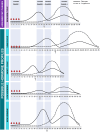Why We Must Stop Assuming and Estimating Menstrual Cycle Phases in Laboratory and Field-Based Sport Related Research
- PMID: 40085421
- PMCID: PMC12152053
- DOI: 10.1007/s40279-025-02189-3
Why We Must Stop Assuming and Estimating Menstrual Cycle Phases in Laboratory and Field-Based Sport Related Research
Abstract
The increased growth, popularity, and media interest in women's sport has led to calls for greater prioritisation of female-specific research and innovation. In response, science and medicine researchers have increased the volume of sport-related studies investigating female-specific matters, such as the menstrual cycle. Whilst the accelerated rate of published studies with female participants is welcome, the emerging trend of using assumed or estimated menstrual cycle phases to characterise ovarian hormone profiles is a significant concern. Replacing direct measurements of key characteristics of the menstrual cycle (e.g. the surge in luteinising hormone prior to ovulation via urine detection and sufficient luteal phase progesterone via blood or saliva sampling) with assumptions or estimates (i.e. no measurements) is proposed to be a pragmatic and convenient way of generating data, particularly in field-based research (i.e. elite athlete environments), where time, resources, and athlete availability are sometimes constrained. Using assumed or estimated phases, however, amounts to guessing the occurrence and timing of ovarian hormone fluctuations and risks potentially significant implications for female athlete health, training, performance, injury, etc., as well as resource deployment. The positive intentions of researchers and scientific journals in this space are not in question. The aim of this Current Opinion is to explain why using assumed or estimated menstrual cycle phases is an approach that has little scientific basis and lacks the rigour and appropriate methodological quality to produce valid and reliable data. In doing so, we provide evidence-based responses to common speculation points and offer recommendations for future research.
© 2025. The Author(s).
Conflict of interest statement
Declarations. Conflict of Interests: The contents of this Current Opinion are presented clearly, honestly, and without fabrication, falsification, or inappropriate data manipulation. KJES, MA, PKDB, EF, TF, RH, FMI, XJDJ, KOK, GL, CL, AMC, SN, SMP, PS, MYT and EV have no professional relationships with companies or manufacturers who will benefit from the contents of this Current Opinion. RJB also has no current professional relationships with companies or manufacturers who will benefit from the contents of this Current Opinion. In the interest of transparency, RJB was formerly a paid consultant to Mint Diagnostics, a diagnostics technology company that is no longer trading. All authors have confirmed that they have fully considered and complied with the journal’s policies on competing/conflicts of interests. KJES is an Editorial Board member of Sports Medicine but was not involved in the selection of peer reviewers for this manuscript or any of the subsequent editorial decisions. Funding: No funding was received to assist with the preparation of this article. Author Contributions: All authors contributed to the writing of this paper. In addition, all authors have reviewed and approved the final manuscript. KJES and RJB had the idea for the manuscript and drafted the initial framework for the paper. MYT drafted the figures. MA, TF, PKDB, XJDJ, SMP, MYT, and EV provided physiological content. CL and RH provided clinical content. KOK, GL, AMC, and RJB provided applied content. FMI, SN, and PS provided methodological content. Equity, Diversity and Inclusion Statement: Our author team consists of ten female and eight male authors, representing early-career, mid-career, and senior-researchers, clinicians, and practitioners from elite international, professional, and Olympic sports, from seven countries and three continents. The senior corresponding author is a woman.
Figures


References
-
- Campa F, Levi Micheli M, Pompignoli M, Cannataro R, Gulisano M, Toselli S, Greco G, Coratella G. The influence of menstrual cycle on bioimpedance vector patterns, performance, and flexibility in elite soccer players. Int J Sports Physiol Perform. 2022;17(1):58–66. 10.1123/ijspp.2021-0135. - PubMed
-
- Julian R, Skorski S, Hecksteden A, Pfeifer C, Bradley PS, Schulze E, Meyer T. Menstrual cycle phase and elite female soccer match-play: influence on various physical performance outputs. Sci Med Footb. 2021;5(2):97–104. 10.1080/24733938.2020.1802057. - PubMed
-
- Martin D, Timmins K, Cowie C, Alty J, Mehta R, Tang A, Varley I. Injury incidence across the menstrual cycle in international footballers. Front Sports Act Living. 2021;3: 616999. 10.3389/fspor.2021.616999. (Erratum in: Front Sports Act Living. 2021;3:745792. 10.3389/fspor.2021.745792). - PMC - PubMed
MeSH terms
Substances
LinkOut - more resources
Full Text Sources

